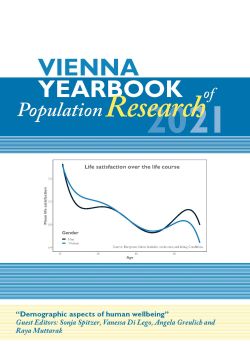
Vienna Yearbook of Population Research 2021, pp. 141-167, 2021/06/14
Demographic Aspects of Human Wellbeing

Human well-being at the national aggregate level is typically measured by GDPper capita, life expectancy or a composite index such as the HDI. A more recentalternative is the Years of Good Life (YoGL) indicator presented by Lutz et al.(2018; 2021). YoGL represents a refinement of life expectancy in which only thoseperson-years in a life table are counted that are spent free from material (1), physical(2) or cognitive limitations (3), while being subjectively perceived as satisfying (4).In this article, we present the reconstruction of YoGL to 1950 for 140 countries.Since life expectancy – as reported by the UN World Population Prospects in fiveyearlysteps – forms the basis of our reconstruction, the presented dataset is alsoavailable on a five-yearly basis. In addition, like life expectancy, YoGL can beflexibly calculated for different sub-populations. Hence, we present separate YoGLestimates for women and men. Due to a lack of data, only the material dimensioncan be reconstructed based directly on empirical inputs since 1950. The remainingdimensions are modelled based on information from the more recent past.
Keywords: Years of Good Life; well-being indicator; human development; survival; basic needs